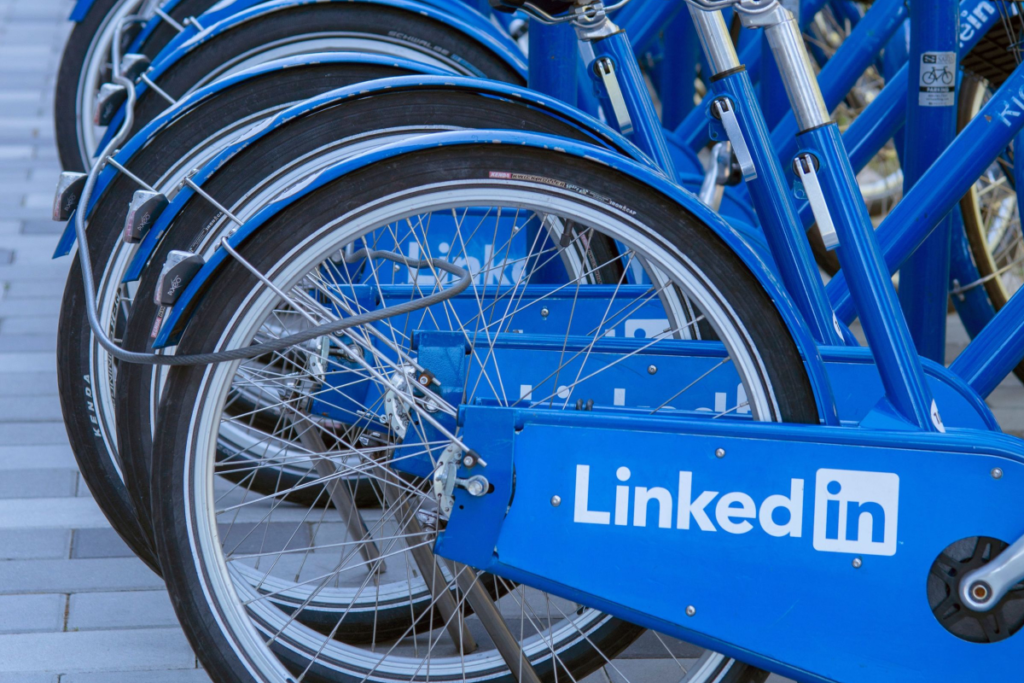In the B2B arena, LinkedIn has cemented its place as the premier platform for professional networking, thought leadership, and strategic business growth.
With close to 1 billion professionals from around the world actively engaging, sharing insights, and forging collaborations, it’s a goldmine for influencer marketing and one of our most valuable tools.
But how can one effectively utilize LinkedIn for B2B influencer collaborations and relationship building?
I’ll show you the basics in this post.
Let’s get started…
1. Understand the LinkedIn Landscape
Before diving headfirst into how to ferret out the right influencers for your company marketing, it’s essential to grasp the unique ecosystem of LinkedIn.
- Professional Focus: Unlike other platforms that cater to a mix of personal and professional content, LinkedIn has a predominantly professional user base. This makes it ripe for B2B networking, collaborations, content, and social selling.
- Content Types: From articles, posts, and videos to interactive polls and stories, understanding the array of content formats available can guide the strategy. The more familiar you get with the platform, the better. Keep in mind that every social media platform operates differently. Each has a different emphasis and therefore their algorithms are too.
2. Identify the Right Influencers
On LinkedIn, influence isn’t merely about follower count although that can be important in the B2B arena too, it’s not the primary determinant.
It’s about engagement, authority, industry expertise, and niche relevance.
- Utilize LinkedIn’s Advanced Search: Filter by job title, industry, location, or keywords to identify potential influencers. You can also search by hashtag to locate relevant content which will lead you to the influencers.
- Engagement Over Popularity: Seek professionals who foster genuine interactions, prompt discussions, and share valuable insights on their posts. Often, an influencer with a smaller social reach but who has a focused audience is a better fit for your needs and will be easier to connect and collaborate with. Also, recall inverse relationship between audience size and impact. The larger an influencer’s social reach, the less their content reaches that audience.
3. Engage Before You Pitch
It’s a cardinal rule: don’t pitch cold. It happens frequently on LinkedIn, but no one likes it.
- Join Relevant Groups: Participate in B2B marketing-focused groups on LinkedIn. Engage in discussions, share your insights, and identify active industry influencers. Just know that many groups on LinkedIn are lightly attended and largely filled with spam posts unless the administrators are active. Seek out the groups where quality content is being posted and conversations are active.
- Interact with Their Content: Comment meaningfully on their posts, share their articles, and genuinely engage through thoughtful comments and questions to build rapport.
- Follow and connect: LinkedIn now allows you to follow many influencers without trying to connect. You may decide to follow their content for a while before sending a connection request.
4. Strategize Collaborative Content
Once you connect and start to build a relationship, brainstorm content ideas that benefits both parties.
Some of the more popular content types include:
- LinkedIn Live Interviews: Host a live session discussing industry trends or dissecting a recent B2B influencer marketing plan. Many influencers hold their own LinkedIn live sessions and many companies do too. Perhaps you begin by inviting the influencer to participate in one of yours?
- Co-author Long-form Articles: Dive deep into a niche topic, providing insights from both brand and influencer perspectives.
5. Measure, Refine, Repeat
Like any marketing strategy, it’s imperative to measure the impact of your LinkedIn influencer collaborations.
- LinkedIn Analytics: Utilize LinkedIn’s native analytics to gauge engagement metrics, follower growth, and content reach.
- Feedback Loop: Engage in regular discussions with your influencer collaborators. Understand what’s working and refine your approach for future collaborations. I suggest running your ideas by the influencers. Often they have insights and findings of their own and are willing to share. Leverage their knowledge and expertise as much as possible.
6. Stay Updated
LinkedIn, as a platform, is continually evolving. New features, changing algorithms, or shifts in user behavior can all impact your influencer strategy.
- Continuous Learning: Platforms like The Influence Marketer can keep you updated on the latest trends, strategies, and best practices in B2B influencer marketing.
In conclusion, when wielded correctly, LinkedIn stands as a prominent tool in the B2B influencer marketing arsenal.
It’s more than just a networking platform; it’s a space where knowledgable professionals converge, ideas are exchanged, and genuine business growth is achieved.
As you embark on your LinkedIn influencer journey, remember: authenticity, strategic collaboration, and continuous learning are your guiding stars.
Got a question? Pop it into the comments below.

